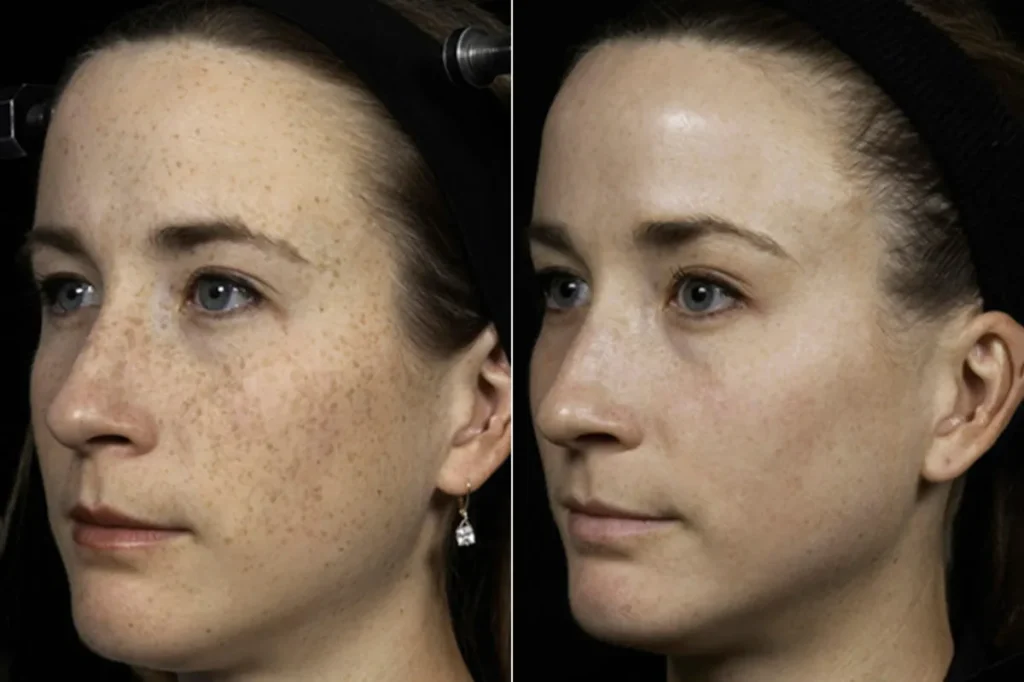Pigmentation issues, such as age spots, melasma, and sun damage, have long been a challenge in dermatology. Fortunately, advancements in laser technology have significantly improved the effectiveness and precision of treatments. This article explores the latest innovations and advances in laser treatment for pigmentation, highlighting how these developments offer better outcomes and enhanced patient experiences.
Understanding Laser Treatment for Pigmentation
Laser treatment for pigmentation involves using focused light to target and break down melanin (the pigment responsible for skin color) in pigmented areas. This process helps to even out skin tone and reduce the appearance of dark spots and discoloration. Traditional laser treatments have been effective, but recent innovations have introduced new technologies and techniques that enhance their efficacy.
Recent Innovations in Laser Technology
- Picosecond Lasers
Picosecond lasers represent a significant leap forward in laser treatment for pigmentation. Unlike traditional nanosecond lasers, picosecond lasers deliver extremely short bursts of light energy in picoseconds (trillionths of a second). This technology allows for more precise targeting of pigment particles, breaking them down into smaller fragments that are more easily absorbed and eliminated by the body.
Advantages:
- Enhanced Precision: Targets pigment more accurately with minimal damage to surrounding skin.
- Faster Results: Typically requires fewer sessions to achieve desired outcomes.
- Reduced Downtime: Generally involves less recovery time compared to older laser technologies.
- Fractional Lasers
Fractional lasers have evolved with improved technologies that enhance their effectiveness in treating pigmentation. These lasers work by creating micro-injuries in the skin, which stimulates the body’s natural healing process and promotes the regeneration of new, healthy skin cells. Recent advancements have made fractional lasers more effective for various types of pigmentation and skin conditions.
Advantages:
- Improved Skin Texture: Enhances both pigmentation and overall skin texture.
- Increased Precision: Allows for targeted treatment of specific pigmented areas.
- Minimized Side Effects: Advances have reduced the risk of side effects and increased patient comfort.
- Multi-Wavelength Lasers
Multi-wavelength lasers combine different wavelengths of light to address multiple pigmentation issues simultaneously. These lasers can target a broader spectrum of pigmentation problems, including sunspots, age spots, and redness. The ability to treat various skin concerns in one session makes multi-wavelength lasers a versatile option.
Advantages:
- Versatility: Effective for treating a range of pigmentation and skin issues.
- Efficiency: Reduces the need for multiple treatments by addressing multiple concerns at once.
- Comprehensive Treatment: Offers a more holistic approach to skin rejuvenation.
- Laser-Enhanced Skincare
Recent advancements have integrated laser technology with skincare treatments to enhance overall results. For example, some clinics now offer combination therapies that use lasers in conjunction with topical treatments, such as vitamin C serums or hyaluronic acid. This approach maximizes the benefits of both treatments and improves skin health.
Advantages:
- Enhanced Results: Combining lasers with skincare can amplify treatment effects.
- Customized Care: Allows for tailored treatments based on individual skin needs.
- Improved Skin Health: Promotes overall skin rejuvenation and health.
How to Choose the Right Laser Treatment for Pigmentation
With so many innovative options available, choosing the right laser treatment for pigmentation can be challenging. Here are some factors to consider:
- Type of Pigmentation: Different lasers are suited to specific types of pigmentation. Consult with a dermatologist to determine the most effective treatment for your condition.
- Skin Type: Ensure the laser technology is compatible with your skin type to avoid adverse effects.
- Treatment Goals: Consider your desired outcomes and select a treatment that aligns with your goals.
- Recovery Time: Some advanced lasers offer quicker recovery times, which may be important depending on your schedule.
Conclusion
Laser treatment for pigmentation has advanced significantly, with innovations such as picosecond lasers, fractional lasers, multi-wavelength lasers, and integrated skincare treatments offering improved effectiveness and patient comfort. These advancements have transformed the way we approach pigmentation issues, providing more precise, efficient, and customized solutions. If you are considering laser treatment for pigmentation, consult with a qualified dermatologist to explore the latest options and find the best treatment tailored to your skin needs.





